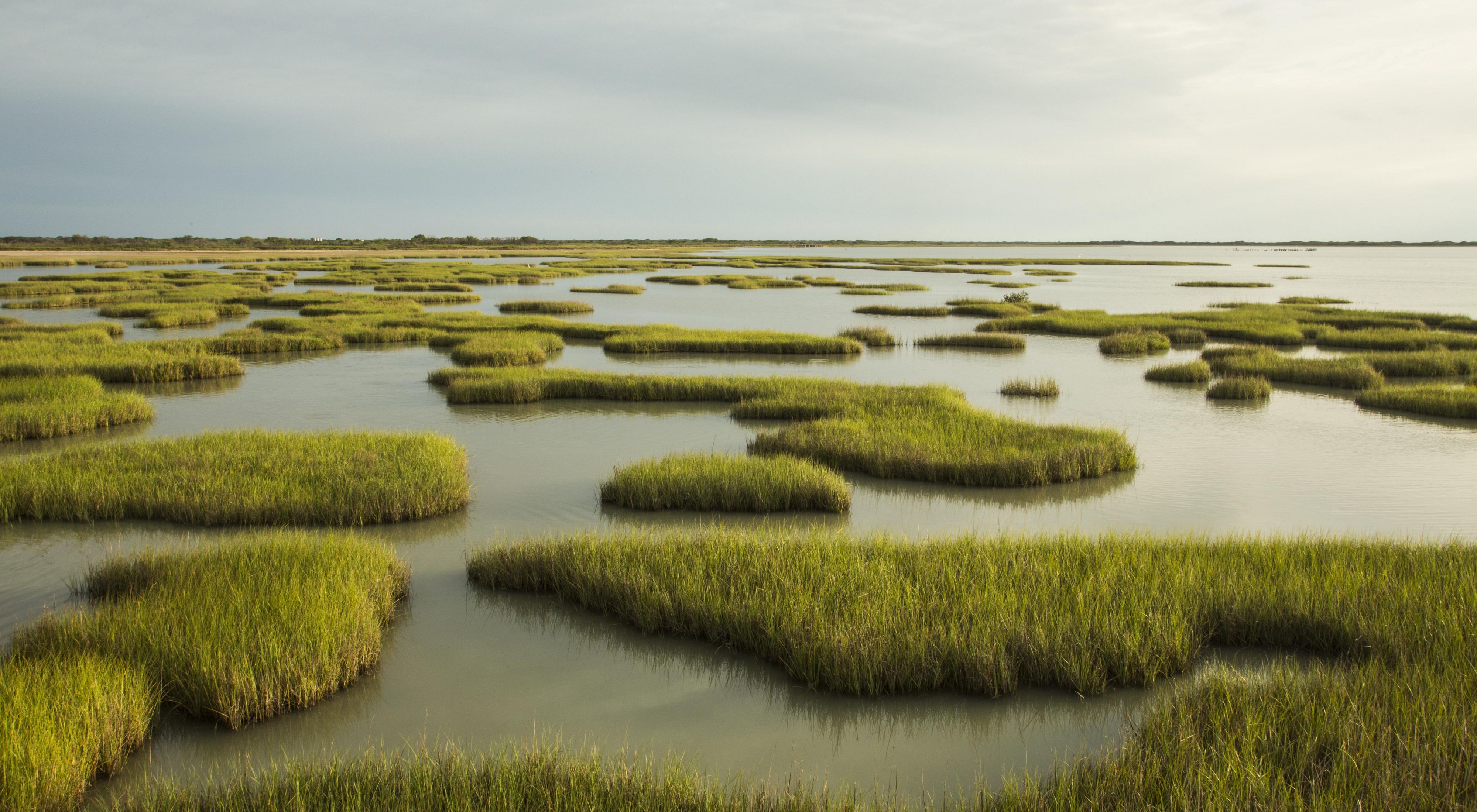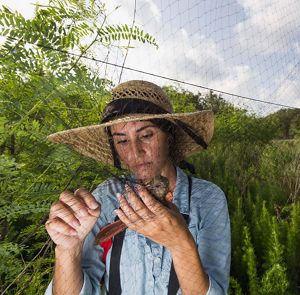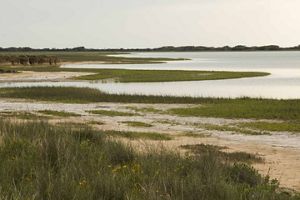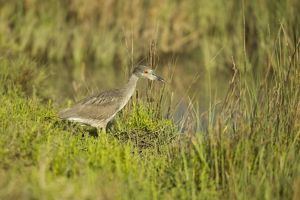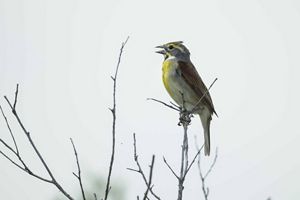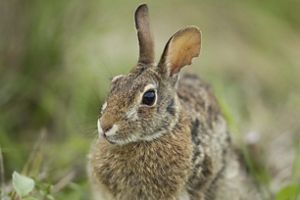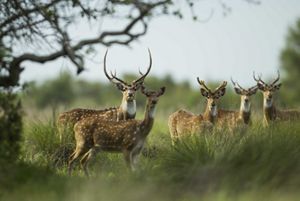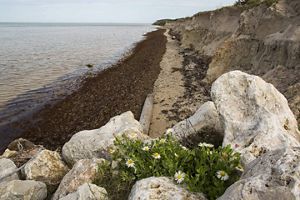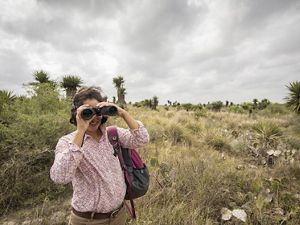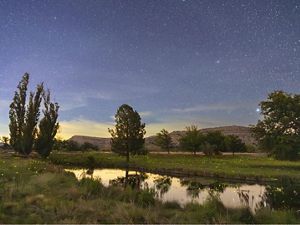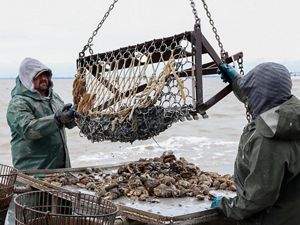Secured by a partnership between The Nature Conservancy (TNC), the Texas Parks and Wildlife Foundation, Texas Parks and Wildlife Department and The Conservation Fund, Powderhorn Ranch offers sweeping, unobstructed views of tallgrass prairies and marshland in addition to 11 miles of tidal bay front that protect vitally important seagrass beds and mollusk reefs. Its environmental significance cannot be overstated. Federally endangered whooping cranes currently winter just 15-30 miles south of Powderhorn. With the number of wild whoopers expanding, the ranch will undoubtedly become a critical habitat for whooping cranes in the coming years.
Powderhorn’s saltwater wetlands also offer important, year-round habitat for shorebirds, wading birds and waterfowl. Elsewhere, extensive woodlands and freshwater wetlands provide critically important “fall-out areas” for migrating songbirds, particularly during spring migration when, exhausted from their flights across or around the Gulf of Mexico, birds use these areas to rest and refuel. TNC plans to conduct extensive wildlife and plant surveys on the ranch, which will undoubtedly become a haven for bird watchers, as well as people interested in fishing, kayaking and canoeing.
The ranch also includes a distinctive geologic formation called the Ingleside Barrier, which supports unique plant life such as the seacoast bluestem and Texas coastal bend live oak. With several miles of Matagorda Bay frontage, the bays and flats along that shoreline serve as important nurseries for a variety of fish and shellfish, including brown shrimp, redfish, spotted sea trout and blue crab.
